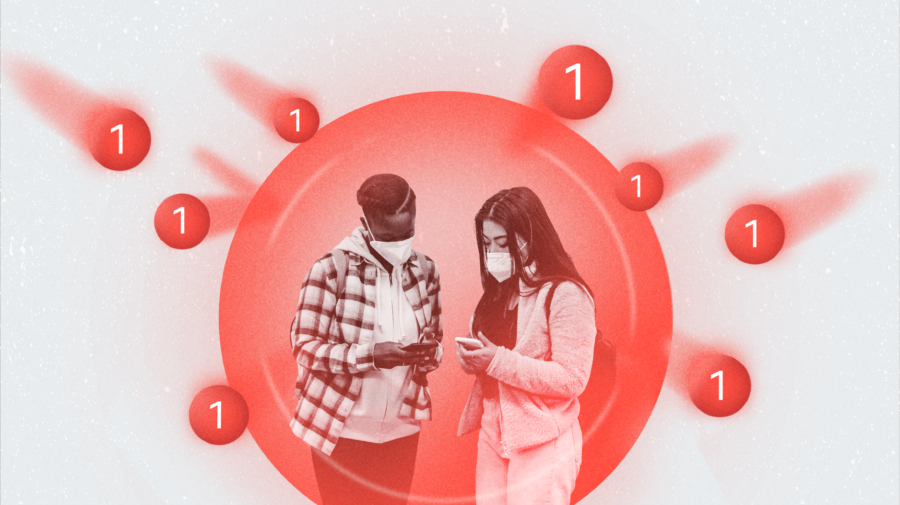With over two billion users worldwide, WhatsApp has become increasingly fertile ground for the spread of misinformation, and therefore an important space for journalists and researchers to monitor. However, as a closed and encrypted platform where users have a higher expectation of privacy than in public online spaces, there are practical and ethical challenges to accessing conversations there.
First Draft director Claire Wardle, research manager Rory Smith, and ethics and standards editor Victoria Kwan were joined by Fabricio Benevenuto, professor of computer science at the Federal University of Minas Gerais in Brazil, to discuss these issues in two recent webinars. Here are some of the main takeaways.
Ethics and transparency
Although administrators of WhatsApp groups may share an invitation link on their public social media, group members may not be aware that their chat is effectively open for anyone to join. Nor will they necessarily notice a message that a new user has joined. It’s important to consider group members’ expectations of privacy, as well as how much information you will provide about yourself and your reasons for joining the group.
“You should be honest and transparent about what you’re doing all the time because it has real impact on your newsroom or institution,” Smith said. “And it can have real repercussions – people don’t want to be spied on.”
If you work in a newsroom or institution such as a university, consider any codes of conduct or ethics approval processes before diving in. Benevenuto’s research projects on the spread of misinformation on WhatsApp underwent an institutional review board process. When his team gathered data in India, their WhatsApp profile stated that they were researchers. They also anonymized the data they collected so content could not be linked back to specific users.
Regardless of any formal requirements, make sure you consider the safety of group members when recording data for research or stories.
Safety
Keeping users’ names, phone numbers, and even a group’s name confidential is important, Smith said: “Not every organization will agree on the same approach, but in my mind, protecting the identity of group members is priority number one.”
There could be exceptions if there is a public interest in the disclosure, however. For example, if a researcher or journalist discovered that a group was sharing harmful content, they could raise it with the platform as part of the reporting process. A misinformation campaign led by a politician or a corporation could also fit the criteria for public interest journalism and deciding who or what to name and how.
“It’s a talk you’d have to have with your newsroom and investigative team, but I think there [would be] a strong public good argument for using that non-anonymized data,” Smith said.
The stakes might differ depending on the group and subject, Kwan noted. If joining a chat whose members are political activists in Hong Kong, “the level of transparency and disclosure I should engage in is much higher because of what is at stake for them,” she said. Activists could reasonably hold concerns for their safety in an environment where there were ramifications for criticizing authorities, for example. “Whereas if I were monitoring white supremacists who were planning on spreading misinformation or conspiracy theories, I might not want to reveal to the administrator who I was.”
If a journalist thought disclosing their identity would put them at risk but there was a strong public interest case for reporting on the group, there could be an argument for privileging the journalist’s privacy over transparency – but this is a difficult ethical issue that should be discussed with editors and colleagues.
And it’s important to think about your own security. “Don’t make the mistake I did and use your own phone unless you want to get thousands of toxic messages a day,” Smith said. He recommended designating a burner phone exclusively for WhatsApp monitoring. “If you encounter problematic people who start threatening you, at least they don’t have your personal details.”
WhatsApp for research
Some researchers have developed tools for the programmatic collection and analysis of messages, such as the WhatsApp Monitor built by Benevenuto’s team.
The monitor has allowed academics and reporters to track the spread of misinformation in Brazil, India and Indonesia on a far larger scale than could be done through manual monitoring.
WhatsApp for journalists
You can find links to WhatsApp groups using Twitter’s “advanced search” option or the search tools on CrowdTangle, if your newsroom has access to the platform. Whichever you use, start by launching WhatsApp Web/Desktop so you can see the WhatsApp interface on your computer screen.
How to find WhatsApp groups on Twitter or CrowdTangle
- Use the advanced search feature on Twitter or either of the search functions on CrowdTangle to build your search using keywords. In the search box “all of these words” (available on Twitter and through the dashboard search on CrowdTangle), type “chat.whatsapp.com”.
- Fine-tune your search with additional parameters such as language or time frame, or by tweaking the keywords.
- Results will show content that include links to WhatsApp groups. Click the link of a group you want to join, and it will open in WhatsApp Web.
Check out First Draft’s webinar page and YouTube channel to see all the recent webinars concerning coronavirus reporting.
Stay up to date with First Draft’s work by becoming a subscriber and follow us on Facebook and Twitter.






